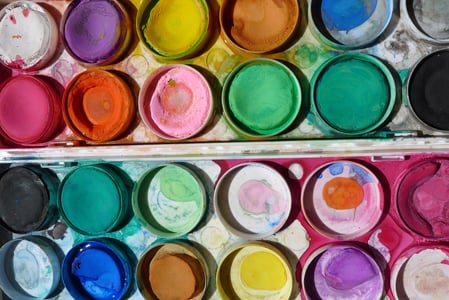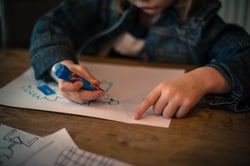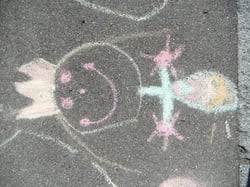
We're continuing our celebration of Week of the Young Child hosted by the National Association for the Education of Young Children (NAEYC). Each day has a theme and Thursday is Artsy Thursday. Artsy Thursday asks you to think, problem-solve, and create.
Artsy Thursday is an opportunity to show off children’s creativity. We loved the messy, hands-on art-making we saw splashed across social media last year, and this year should be more of the same joyful, bright activities. To complement this, we’re highlighting beautiful pieces of visual art that promote open-ended activities, full of brainstorming and inference that can deepen children’s creativity and learning.
This art comes in the form of two wonderful, wordless, picture books: Journey, by Aaron Becker and Chalk, by Bill Thompson. It’s amazing how removing the words focuses you on the art and encourages you to tell your own story. Below I’ll break down the story and an artsy activity that could go with it.
JOURNEY
Written and illustrated by Aaron Becker, Journey (see preview here) is the beautiful story of a lonely girl who uses a red crayon to draw her way into magical adventures that eventually lead her to a friend. The incredible drawings prompt so many thoughts and questions, you barely have to plan ahead. But with a little planning, there are so many ways to bring in higher-order thinking skills (think Concept Development, Quality of Feedback, and Language Modeling).
- The title is Journey. Does anyone know what a journey is? Has anyone been on a journey?
- Hmm.. I notice the scooter, bike, and ball are all red. I wonder why?
- What do you see? What else do you see?
- How do you think she’s feeling? How do you know? When have you felt that feeling [maybe bored or lonely] before?
- What other stories have we read that have a child with a crayon?
- During moments of tension in the story - What would you do?
- What journey do you think the two friends will take now?

After the story, it’s time to get artsy! Make a plan - where would you go if you could draw your own imaginary dream? Using paint, markers, crayons, or really anything, have children plan and then create their dream scene. Older children can try to predict what the next scene in the book may be, then draw and write about that.
CHALK
Chalk is the story of three children who find a bag of chalk at the playground on a rainy day and soon realize their drawings have come to life! Because this picture book has no words, it’s perfect for bringing in Concept Development and Language Modeling. Students can predict, compare, discuss, and summarize the story with no chance of being wrong!
- How are the kids feeling?

- What is happening? Why?
- Why do you think he’s drawing that?
- What do you think will happen next?
- How is this different from our chalk?
- Does this remind you of any other stories
- What would you draw if you have magic chalk?
And then it’s time for students to create! First, make a plan. What would you draw with magical chalk? Then head outside or use construction paper or chalkboards to allow children to create their own drawing and imagine it coming to life. With older kids, you could incorporate a writing component as well.
Don’t have either picture book? Eric Carle's books are great for inspiring collage art. Put out cut-out shapes, ripped-up construction paper, old wrapping paper, and glue and let students make their own creations.
Remember, the goal is process over product, so just get creating!
